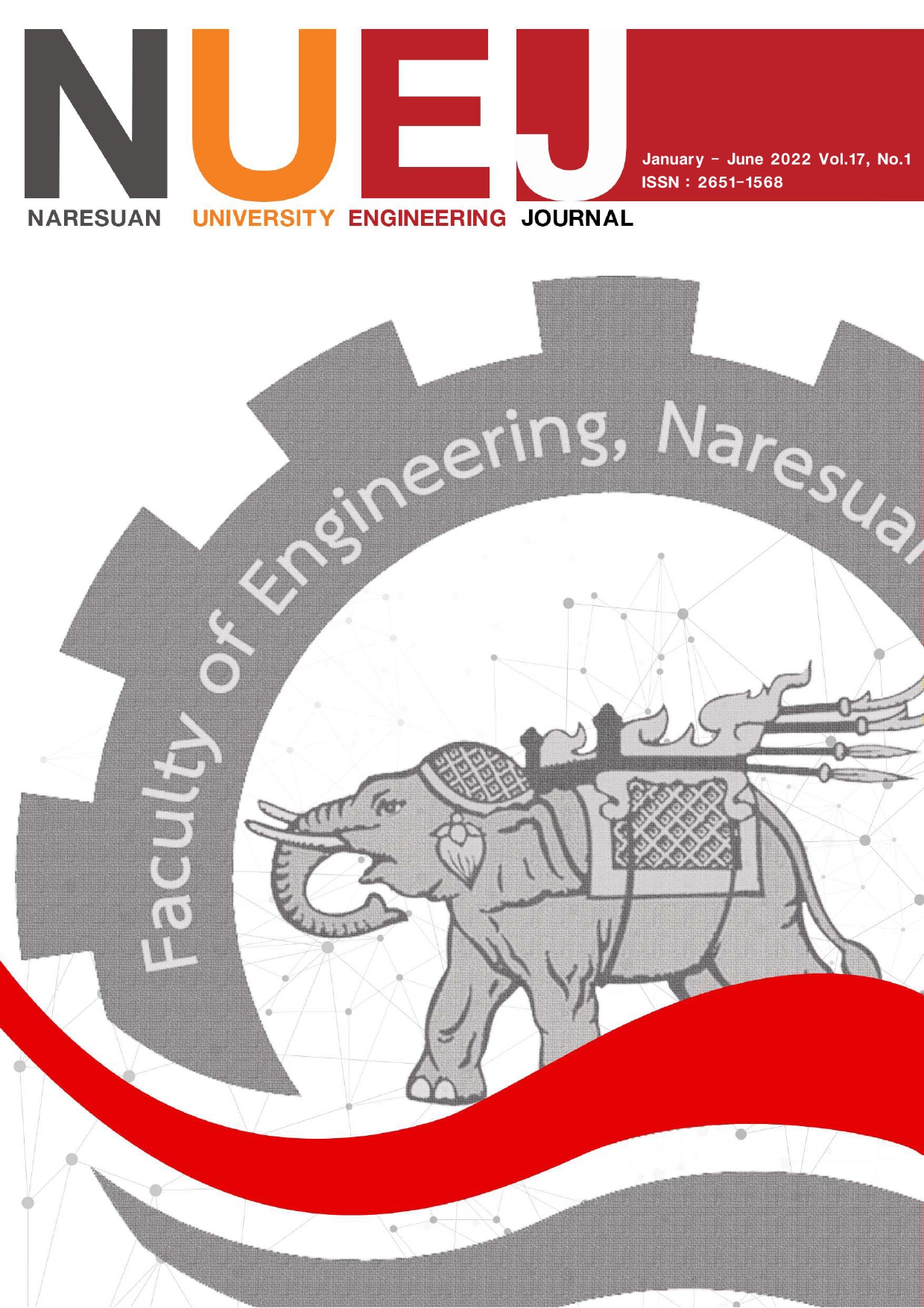Spreadsheet Modeling Applied to Food Waste Reduction in Food Supply Chains
Main Article Content
Abstract
Food waste is a global issue addressed by the United Nations 2030 Agenda for Sustainable Development to reduce half of the food waste at the retailer and consumer levels. The quantitative approach is required to make correct decisions regarding food waste reduction options in food supply chains. In this study, a spreadsheet modeling method was applied to achieve quantifiable impacts on food waste reduction. A case study of the downstream retail phase of a two-level supply chain of a fresh prepacked food product was used to demonstrate the model application. Information regarding the buying and consuming behaviors of consumers was collected by questionnaires to be used for stochastic analysis of inputs in the spreadsheet model. The results showed that adjusting the packaging size to match a distinct local profile could play a major role in food waste generation with appropriate sizing of retail packages enabling a reduction of up to 127 kgs. per month, or 62%, of food wastage in the supply chain. The tradeoff between the two levels of the supply chain was required to achieve this reduction of food waste. At the consumer level, smaller packaging sizes were preferred to reduce food waste which was more sensitive to the package sizes than the retailer’s preference for larger packaging sizes. As well, self-weighing of unpackaged food in quantities required by the customer could reduce food waste by 7 kgs. per month, representing a 10% reduction over the selling-buying method of small pre-packed packages. Overall, good consumer food buying alone could reduce the total food waste by 59% and good consumption practices alone could reduce the total food waste by 66%.
Article Details

This work is licensed under a Creative Commons Attribution-NonCommercial-NoDerivatives 4.0 International License.
References
Adenso-Díaz, B., Lozano, S., & Palacio, A. (2017). Effects of dynamic pricing of perishable products on revenue and waste. Applied Mathematical Modelling. 45, 148–164.
https://doi.org/10.1016/j.apm.2016.12.024.
Buisman, M. E., Haijema, R., & Bloemhof-Ruwaard, J. M. (2019). Discounting and dynamic shelf life to reduce fresh food waste at retailers. International Journal of Production Economics, 209, 274–284. https://doi.org/10.1016/j.ijpe.2017.07.016.
de Moraes, C.C., de Oliveira Costa, F.H., Roberta Pereira, C., da Silva, A.L., & Delai, I. (2020). Retail food waste: mapping causes and reduction practices. Journal of Cleaner Production. 256, 120124. https://doi.org/10.1016/j.jclepro.2020.120124.
FAO. (2011). Global food losses and food waste – Extent, causes and prevention, Rome.
Haijema, R., & Minner, S. (2016). Stock-level dependent ordering of perishables: A comparison of hybrid base-stock and constant order policies. International Journal of Production Economics. 181, Part A, 215–225. https://doi.org/10.1016/j.ijpe.2015.10.013.
Janssen, L., Diabat, A., Sauer, J., & Herrmann, F. (2018a). A stochastic micro-periodic age-based inventory replenishment policy for perishable goods. Transportation Research Part E: Logistics and Transportation Review, 118, 445–465. https://doi.org/10.1016/j.tre.2018.08.009.
Janssen, L., Sauer, J., Claus, T., & Nehls, U. (2018b). Development and simulation analysis of a new perishable inventory model with a closing days constraint under non-stationary stochastic demand. Computers and Industrial Engineering, 118, 9–22. https://doi.org/10.1016/j.cie.2018.02.016.
Mondéjar-Jiménez, J.-A., Ferrari, G., Secondi, L., & Principato, L. (2016). From the table to waste: An exploratory study on behaviour towards food waste of Spanish and Italian youths. Journal of Cleaner Production, 138, 8–18.
https://doi.org/10.1016/j.jclepro.2016.06.018.
Nellemann, C., MacDevette, M., Manders, T., Eickhout, B., Svihus, B., Prins, A. G., & Kaltenborn, B. P. (2009). The Environmental Food Crisis – The Environment’s Role in Averting Future Food Crises. A UNEP Rapid Response Assessment, United Nations Environment Programme, GRID-Arendal, 29 – 32. www.grida.no. ISBN: 978-82-7701-054-0.
Papargyropoulou, E., Lozano, R., Steinberger, J. K., Wright, N., & Ujang, Z. (2014). The food waste hierarchy as a framework for the management of food surplus and food waste. Journal of Cleaner Production. 76, 106–115.
https://doi.org/10.1016/j.jclepro.2014.04.020.
Parfitt, J., Barthel, M., & Macnaughton, S. (2010). Food waste within food supply chains: quantification and potential for change to 2050. Philosophical Transactions of the Royal Society B, 365, 3065–3081. https://doi.org/10.1098/rstb.2010.0126.
Richter, B. (2017). Knowledge and perception of food waste among German consumers. Journal of Cleaner Production, 166, 641–648.
https://doi.org/10.1016/j.jclepro.2017.08.009.
Secondi, L., Principato, L., & Laureti, T. (2015). Household food waste behaviour in EU-27 countries: A multilevel analysis. Food Policy, 56, 25–40. https://doi.org/10.1016/j.foodpol.2015.07.007.
Somkun, P., (2017). Stochastic mathematical model for food waste reduction in a two-level supply chain for highly perishable products. International Journal of Supply Chain Management, 6, 1, 165–171.
Somkun, P. N. (2020). Mathematical modeling approach applied to food waste reduction at retailer and consumer levels in food supply chain. In Food Industry Wastes: Assessment and Recuperation of Commodities, 409–429. Elsevier.
https://doi.org/10.1016/B978-0-12-817121-9.00019-X
Song, G., Li, M., Semakula, H. M., & Zhang, S. (2015). Food consumption and waste and the embedded carbon, water and ecological footprints of households in China. Science of the Total Environment, 529, 191–197. https://doi.org/10.1016/j.scitotenv.2015.05.068.
United Nations. (2015). Sustainable development goals. 17 goals to transform our world.
https://www.un.org/sustainabledevelopment/sustainable-consumption-production/. (accessed 15 June 2021).
Williams, H., & Wikström, F. (2011). Environmental impact of packaging and food losses in a life cycle perspective: a comparative analysis of five food items. Journal of Cleaner Production. 19, 1, 43–48.
https://doi.org/10.1016/j.jclepro.2010.08.008.
Yetkin Özbük, R.M., & Coşkun, A. (2020). Factors affecting food waste at the downstream entities of the supply chain: A critical review. Journal of Cleaner Production. 244, 118628.


